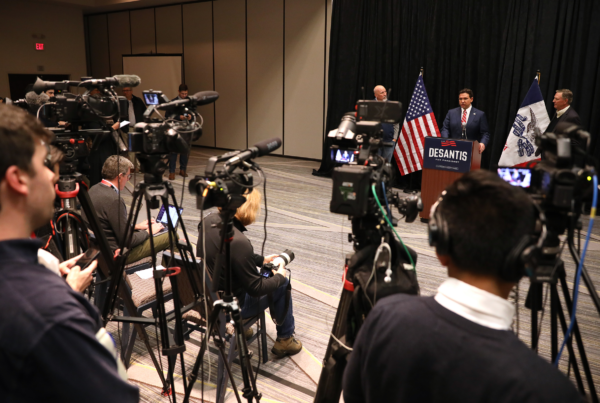Dems and Reps are Similar in Proportion of Negative Ads,
but Dem Strategy Likely Driven by Desire to Draw Attention Away from the Policy Environment
(MIDDLETOWN, CT) Oct. 26, 2010 — As we reported last week, “claims that 2010 is the most negative election to date may be premature. In an analysis of close to 900,000 airings from January 1 to October 5, 2010, the Wesleyan Media Project finds that the distribution of positive, negative and contrast ads is comparable to 2008 in proportion, if not in volume.” In an update to that release, and with a focus on House and Senate races, we continue to find similar rates of negativity. Furthermore, we find that Democrats and Republicans are airing similar proportions of negative (and positive) spots in federal races. However, there is one crucial difference: Democrats are using personal attacks at much higher rates than Republicans and a much higher rate than Democrats in 2008.
***To view entire release as a pdf, click here.
***To view tables only, select a format: pdf xls or zipped xml
Table 1 shows the percentage of attack ads (ads focusing only on the opposing candidate) that are focused on candidate characteristics, issues of public policy, or a mixture of both. (Breakdowns in this way for contrast and promotional spots are available in the downloadable excel file.) In 2010, pro-Democratic ad sponsors focused on the personal characteristics of Republican candidates in 21% of their attack ads. This is up from the 12% of Democratic attack ads in 2008 that were focused on personal characteristics. Republicans have mentioned candidate characteristics in 11 percent of their attack ads this year.
The use of personal attacks actually makes sense for the Democrats this year,” said Michael Franz, co-director of the Wesleyan Media Project and associate professor of government at Bowdoin College. “The issue environment does not really favor them, in that many Obama policies are unpopular, so many Democrats are choosing to point out the personal foibles of their opponents.”
Table 1. Type of Negative Attacks by Party (All Sponsors)
Table formats: pdf xls or zipped xml
Table 1 includes all sponsors (candidate, party, and outside groups), but Table 2 shows the numbers for candidate-sponsored ads. Here again Democrats are much more likely to attack an opponent’s character and readiness for office. In nearly 30 percent of attack ads sponsored by Democratic candidates, the personal characteristics of Republicans are the primary focus of the ad.
As a consequence, issues are taking a backseat in Democratic ads. In fact, they are the primary focus in only 35 percent of their attacks,” said Erika Franklin Fowler, co-director of the Project and assistant professor of government at Wesleyan University. “In contrast, the data suggest that Republicans are taking advantage of citizen unhappiness with the current state of affairs by attacking Democratic candidates primarily on substantive policy issues—that’s the focus of 56 percent of their attacks,” she added.
Table 2. Type of Negative Attacks by Party (Candidate Ads Only)
Table formats: pdf xls or zipped xml
Travis Ridout, co-director of the Project and associate professor of political science at Washington State University, offered some perspective: “In spite of the dozens of attack ads this year that focus solely on the personal characteristics of candidates, there are many more that focus on policy issues. So while there may be plenty of mud-slinging on our television screens, much of the discussion of political opponents still centers on issues of public policy.”
The Wesleyan Media Project provides real-time tracking and analysis of all political television advertising in real-time. Housed in Wesleyan’s Quantitative Analysis Center –part of the Allbritton Center for the Study of Public Life – the Wesleyan Media Project is the successor to the Wisconsin Advertising Project, which disbanded in 2009. It is directed by Erika Franklin Fowler, assistant professor of government at Wesleyan University; Michael M. Franz, associate professor of government at Bowdoin College and Travis N. Ridout, associate professor of political science at Washington State University.
The Wesleyan Media Project is supported by grants from John S. and James L. Knight Foundation, The Sunlight Foundation, Wesleyan University, and its partner institutions Bowdoin College and Washington State University. Data provided by Kantar Media/CMAG with analysis by the Wesleyan Media Project using Academiclip, a web-based coding tool. Results are based on a large sample of ads, accounting for nearly 700,000 airings between January 1 and October 13.
For more information contact:
David Pesci at 860-685-5612 or dpesci at wesleyan.edu
Erika Franklin Fowler at 860-685-3407 or efowler at wesleyan.edu
Michael M. Franz at 207-798-4318 or mfranz at bowdoin.edu, or
Travis N. Ridout at 509-335-2264 or tnridout at wsu.edu
###



